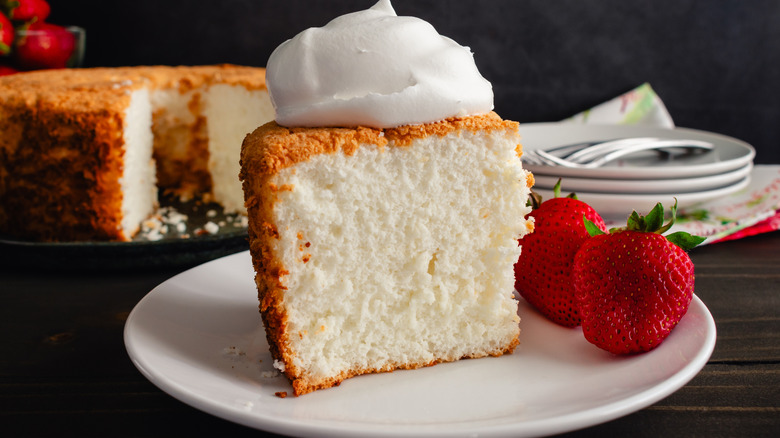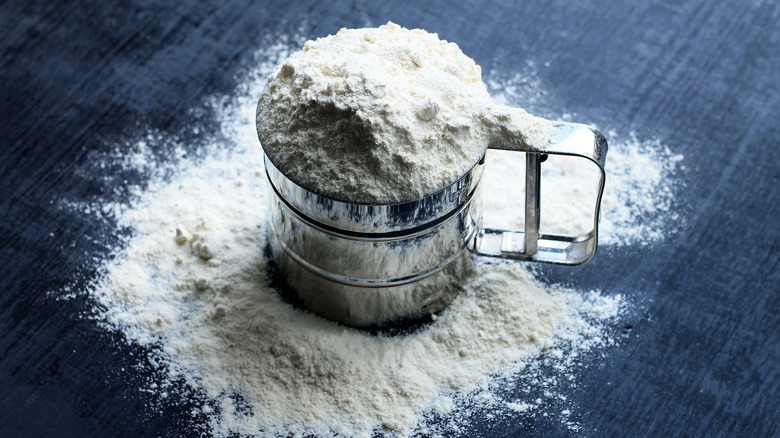How Sifting Flour Twice Transforms Your Angel Food Cake Texture
Angel food cake got its moniker because it's a light and airy dessert, much like the wings of the beings it's named for. A cake that's heavy and dense, though, hardly merits being named after heavenly messengers. But that's the type of cake one risks getting if the critical step of sifting flour is skipped. While sifting your flour once is an essential step when making angel food cake, double-sifting your flour helps take the dessert even further over the top and to heavenly heights.
To get the inside scoop on double sifting, Food Republic spoke with professional pastry chef and baker Trina Dekett, who is the operations and creative specialist behind BaKIT Box. "Sifting helps aerate the flour, leaving it less dense and compact," Dekett, who has been a professional pastry chef and baker for over 12 years, explains exclusively to Food Republic. "Double sifting further aerates, ensuring that you have the best chance of removing any clumps, and in turn, creating a lighter, fluffier end product."
Many home bakers are tempted to skip steps like sifting that may seem unnecessary to them, since they intend to mix their ingredients with a KitchenAid or handheld mixer and presume those actions can replace the sifting. Professionals, though, understand important factors of the process that can't be achieved by an ordinary blending of elements. "By not sifting you run the risk of clumps of flour sticking together, which will likely not be able to separate just through handheld or electric mixing," Dekett goes on. "Sifting your flour (and any dry ingredient) gives a more consistent result, as well as ensuring that you have properly aerated your ingredients — which will always yield a lighter, softer, more even crumb."
Other double-sifting situations
Certain types of flour in particular should be sifted more than once before being added to angel food cake batter or any other baking mix. Trina Dekett explains that whole grain flours should always be sifted multiple times, for instance, and "any dry ingredients that have the tendency to clump should be sifted thoroughly." No matter what size of flour bag you're taking the dry element from, you can be sure the contents have settled, and "the more flour in the bag, the more dense and compact it is/becomes over time," Dekett shares in our exclusive chat. This makes it important to sift air back into the powder as well as to break up lumps. "Being extra cautious, I'd advise to even sift 'pre-sifted' flour as when it sits in a bag over time, it condenses and begins to clump together," she adds.
Even the climate where one lives can have an adverse effect on flour that only sifting can fix. "Humidity in your area will also greatly affect how much your flour clumps," Dekett notes. "[If] you live somewhere humid, [ensure] you sift once, if not twice each time you bake!" Properly cleaning your flour sifter is also important, to keep remnants from previous baking projects from sneaking into the dry ingredients of a new cooking endeavor.
If you don't have a flour sifter, don't let that deter you from completing this important step. You can use an ordinary drinking glass for a mess-free way to sift flour. You can also use a wire whisk to fluff air into your dry ingredients (make sure you understand which type of whisk is best for the job).


